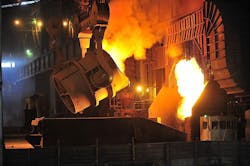Drive Value from Big Data: An Introduction to Industrial Machine Learning
It is estimated that the global GDP will be 14% higher in 2030 due to AI technology, including machine learning. A recent report by PwC stated that AI capabilities, including machine learning (ML), or expert systems, will enable industries and businesses to advance their current capabilities, leading to a potential contribution of nearly $16 trillion in the next 13 years.
This is great for industry as a whole, though this series of automation evolution could make some at the top of the hierarchy expendable. Currently, it's the role of the business leaders to emphasize on optimum utilization of available resources and focus on improving business processes and increasing productivity. But with these ever evolving automated industrial processes, everything is already optimized for them. It is difficult to gain any extra improvements without significant upfront investments.
Machine intelligence, particularly when employed to analyze Big Data, provides a low-cost solution to this problem.
For last five years at least, machine learning has been a buzz word in the IT industry. Its application and use in other industries are evolving. BitRefine, founded in 2013, has the goal of educating potential customers on how expert systems help in improving industrial processes.
Hopefully, this will serve as a primer. We will discuss basics such as what is machine learning and how does it help industrial processes by providing some common examples.
Let's begin with how expert systems work.
Machine learning algorithms enable the machines to learn from the volumes of data available to it. In other words, the machine can learn from its environment and refine its tasks without depending on the rule-based programming. For instance, with extensive log data from production line ML predicts the final quality of particular batch and stops further processing that batch at an early stage, if necessary. Machine learning is therefore also considered a branch of artificial intelligence (AI).
Machine learning is essential to make sense of Big Data. Without these algorithms, Big Data is a useless heap of numbers. Big data is the term applied to data that has large volume and velocity. A common example would be data obtained from sensors in a chemical production process. Given the large volume of data, it is not humanly possible to analyze all the data collected. However, it is possible for machine algorithms to use these data to gain insight from the Big Data obtained from various resources such as sensors, logs, or internet of things (IoT). These insights in turn can be used to optimize usage of input such as chemicals, catalysts, and chemical agents.
Reduced consumption of these chemicals not only drops costs, but also your shrinks your impact on the environment.
Brain Building: How Machine Learning Is Developed
A data scientist develops machine intelligence through several approaches. One widely discussed approach is 'neural networks'. Taking inspiration from the human brain and its complexities, the programmers have developed neural networks which are algorithms to identify images or patterns. Unlike human brain, the machines do not get fatigued and can do tasks with speed and accuracy. A good data scientist matches the approach with the task at hand. Machine learning provides various capabilities such as automated predictive analysis, process automation, improving operational efficiencies and develop a better understanding of customers. Furthermore, machine learning helps in detecting deviations from patterns and to predict when a device (turbine for example) is going to break down. This is a failure prediction task. To summarize, data scientists employ machine learning to optimize business processes and curb unusual activities.
Even for small and mid-size organizations, machine learning is easy to implement. It dramatically increases the productivity without requiring redesigning of the processes. In most cases manufacturing facilities already log hundreds of parameters from their processes. ML reads those parameters to offer guidance regarding the element of a production line to tune in order to optimize the quality of final product. This can be changes of temperatures, timing, amount of input chemicals, input raw materials, catalysts. The system is programmed to work in a fully automatic mode or only to provide an existing operator with recommendations.
The deployment cycle may span only a few weeks, while you will see an immediate return on investment. In a recent survey, the participants reported that the ROI for expert systems was quantifiable and observable in early stages of implementation. The use of machine learning is not limited to one industry but can be applied across industries such as aviation, healthcare, telecommunication, and retail. Machine learning can contribute to environmental improvement too. For an industry such as oil & gas, it can identify high demand, high-risk situations.
In general, it can help identify stressors, hazardous materials in the environment (e.g., hospitals). This further adds to global benefits of machine learning.
According to machine learning experts from BitRefine Group that offers machine learning solutions, even fully optimized processes of chemical industry, heavy machinery, automotive can achieve 5-10% of efficiency, thanks to ML. There is no doubt that within a decade most traditional industries will integrate ML into their processes for boosting profit (or savings). At a global scale, industrial sector generates revenues over $25 trillion. ML applications have a potential of saving 5% (approx. $1 trillion) or more in almost all industries without heavy investing. The future holds exciting promises.
This article was contributed by BitRefine Group. To submit articles for consideration, please email [email protected].












